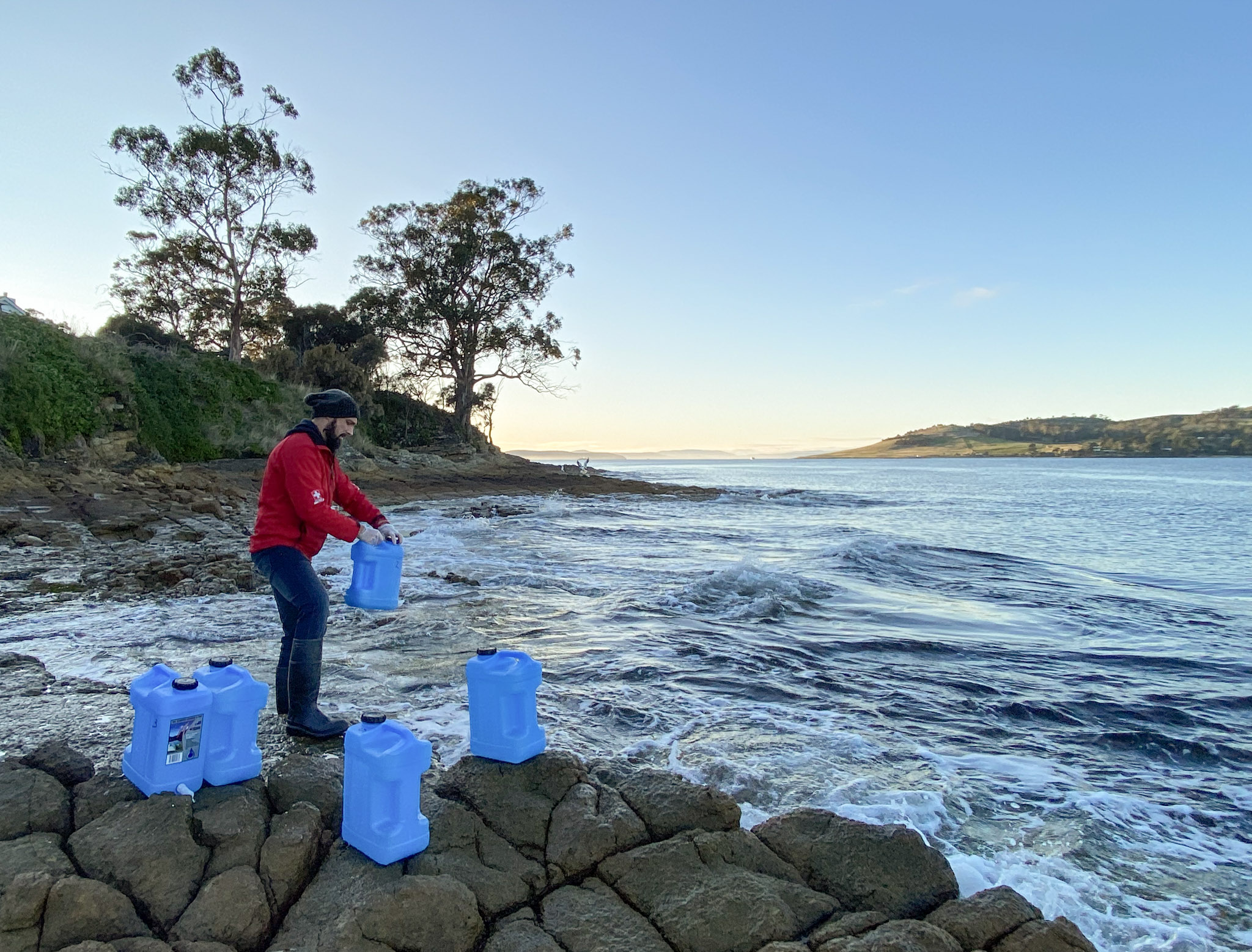Australia has a vast marine estate, with a network of more than 160 marine parks exceeding 4 million km2.
The marine environment contributes an estimated $105 billion per year to Australia's GDP by providing food, mineral resources, recreation and cultural value, as well as supporting shipping and defence. It faces local and global threats that could have significant ecological and socioeconomic impacts.
Effective management of Australia's marine environment is vital. But collecting the data to support evidence-based decisions across a vast, biodiverse and often remote marine estate poses unique challenges.
How eDNA can help

eDNA technologies collect, sequence and match traces of DNA in environmental samples, such as soil and water, to the species present at a site. In the marine environment, eDNA collection is a fast, cost-effective and safe alternative to monitoring methods such as visual surveys, video, multibeam sonar or fisheries catch records.
The opportunities to use eDNA for environmental monitoring and management in marine parks include:
- detecting pest species
- detecting rare and threatened species
- providing data on multiple species to characterise ecosystems
- detecting changes in environmental condition.
CSIRO's eDNA roadmap
The roadmap provides a pathway for integrating eDNA technologies into Australian monitoring programs to manage sustainable use and conservation of the marine environment.
The roadmap describes how eDNA technologies with high technology readiness levels can be integrated into routine monitoring. It also looks ahead to emerging methods that will allow management bodies to anticipate future monitoring scenarios.
Short-term recommendations for marine management:
- Adopt eDNA technologies in marine parks, leveraging Australia's strong research capacity in eDNA.
- Scale eDNA capacity by upskilling staff in eDNA and investing in the transition to eDNA.
- Standardise eDNA use in marine parks by providing best practice standards and user guides.
- Calibrate eDNA technologies against traditional monitoring methods
- Include Traditional Owners, citizen scientists and other stakeholders to deploy eDNA technologies.
- Embed eDNA monitoring systems at scale across Australia.
Download
Australia has a vast marine estate, with a network of more than 160 marine parks exceeding 4 million km2.
The marine environment contributes an estimated $105 billion per year to Australia's GDP by providing food, mineral resources, recreation and cultural value, as well as supporting shipping and defence. It faces local and global threats that could have significant ecological and socioeconomic impacts.
Effective management of Australia's marine environment is vital. But collecting the data to support evidence-based decisions across a vast, biodiverse and often remote marine estate poses unique challenges.
How eDNA can help
eDNA technologies collect, sequence and match traces of DNA in environmental samples, such as soil and water, to the species present at a site. In the marine environment, eDNA collection is a fast, cost-effective and safe alternative to monitoring methods such as visual surveys, video, multibeam sonar or fisheries catch records.
The opportunities to use eDNA for environmental monitoring and management in marine parks include:
- detecting pest species
- detecting rare and threatened species
- providing data on multiple species to characterise ecosystems
- detecting changes in environmental condition.
CSIRO's eDNA roadmap
The roadmap provides a pathway for integrating eDNA technologies into Australian monitoring programs to manage sustainable use and conservation of the marine environment.
The roadmap describes how eDNA technologies with high technology readiness levels can be integrated into routine monitoring. It also looks ahead to emerging methods that will allow management bodies to anticipate future monitoring scenarios.
Short-term recommendations for marine management:
- Adopt eDNA technologies in marine parks, leveraging Australia's strong research capacity in eDNA.
- Scale eDNA capacity by upskilling staff in eDNA and investing in the transition to eDNA.
- Standardise eDNA use in marine parks by providing best practice standards and user guides.
- Calibrate eDNA technologies against traditional monitoring methods
- Include Traditional Owners, citizen scientists and other stakeholders to deploy eDNA technologies.
- Embed eDNA monitoring systems at scale across Australia.
